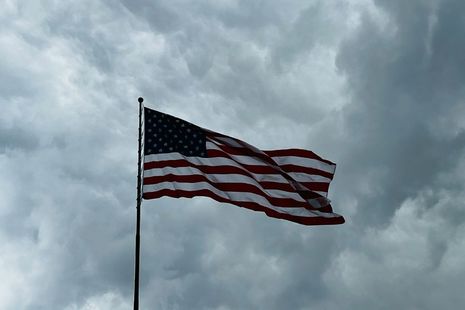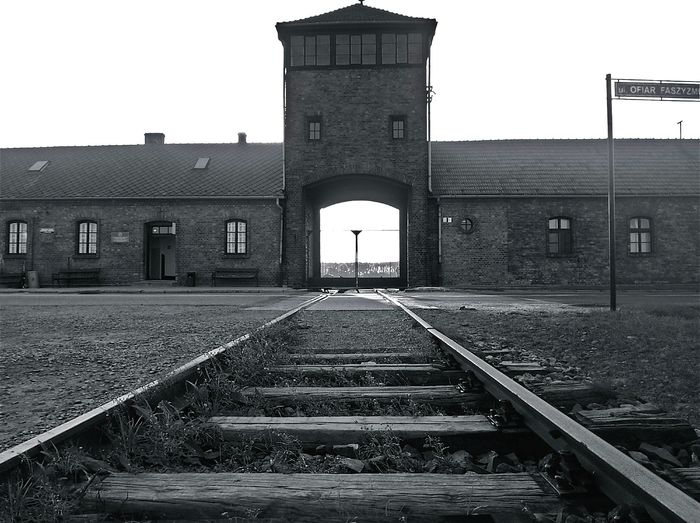Civil War captures the cost of conflict through the journalist’s lens
Alex Garland’s latest film follows three photographers caught in the moral crossfire of documenting war

Alex Garland, well-known for his adult science-fiction movies Ex Machina and Annihilation, has released a political dystopia that hits far closer to home than his more futuristic films. Starring Kirsten Dunst (Lee Smith), Wagner Moura (Joel) and Cailee Spaeny (Jessie), Civil War is set in a dystopian near future. We’re given no context: all we know is that war has erupted in America between presidential forces and a western alliance comprising California and Texas. The plot follows renowned war photographer Lee Smith, her thrill-seeking colleague Joel and an admiring young fan of Lee’s on their journey to interview the president before Western forces reach the city.
“By minimising the politics of the situation, Garland focuses on a deeply human ethical dilemma”
Conventionally, war stories follow the lives of fighters or survivors. But Lee Smith’s group represent onlookers: they follow, watch, record. Their job isn’t to fight. It’s to document the uncensored truth so others may fight over it instead.
The trailer creates expectations of a political thriller packed with action sequences. But the film doesn’t subscribe to that genre: the movie’s political aspects are largely brushed aside. By minimising the politics of the situation, Garland focuses on a deeply human ethical dilemma. Each main character represents a wildly different way of coming to terms with this question. Lee Smith is a weary soul, disillusioned with her life’s work. She has spent so long convincing herself that the cause justifies the means. She remains, for instance, a silent bystander as a man is burned alive. But her resolution is slowly breaking.
Where Smith deals with the violence through stoicism and emotionlessness, Joel takes a sort of twisted pleasure in the danger of the firefights they follow from the sidelines. Jessie is Lee’s mirror opposite: a newbie where Lee is experienced, fervently ideologically where Lee is cynical. Her zealous excitement turns to shock at her first violent encounter. Slowly, however, her elders teach her to do what they do. Part of us wishes that she kept that horror. There’s something inhuman about seeing her learn to witness horrific brutality with indifference.
“What Garland’s movie says about humans is demoralising but perhaps realistic”
In this wide range in characterisation of war photographers, our own response to the dilemma becomes entangled. Recording war is important. We see horrific pictures on the news that come straight from warzones and tell ourselves that spreading these images, that making people aware, is just and right. But there’s a horrifying cold detachment in being able to snap a picture of a dying man, woman or child – especially in the aestheticization of violence. Jessie struggles throughout the movie to get the right shot: perfectly focused, beautiful in its violence and horror. A picture of just any old violence won’t do. Sorry if my guts didn’t hit the sidewalk exactly how you wanted. What Garland’s movie says about humans is demoralising but perhaps realistic.
Partly, what makes this movie so personal and disturbing is its home setting, especially for American viewers. The striking images of tanks on country roads, mass graves and dead bodies rotting in the sun that we’re so used to seeing in Ukrainian and Middle Eastern war zones are placed onto the streets of America, once considered safely removed from war’s brutality.
“There’s perhaps a slip in coherence to the plot”
There’s perhaps a slip in coherence to the plot, sacrificed to the exploration of a challenging moral dilemma. “Where are these photos going?” we might ask, “What newspapers are still circulating during a civil war? Do people even have access to the news?” The group’s journey lacks any strong motivation. It feels like they’re doing it simply because it’s their job or to outdo other journalists in getting an interview with the president. However, this could also be another device of Garland’s if he wanted his ultimate message to be a cynical one. “What’s the point?” we ask. “There is none,” he replies.
The soundtrack is bold and masterful. Overlaying gruesome scenes with upbeat pop songs creates a jarring effect that makes us aware of our learned apathy towards violence. The silent and still picture shots which interrupt the last gunfight skilfully capture the experience of a photographer in the chaos of a warzone.
Garland’s movie offers a new perspective of war: not the soldiers fighting it or the civilians struggling to survive but those who watch. The lives of these war photographers may feel distant from our own yet, although Garland doesn’t choose deeply relatable characters, his fresh perspective leaves a profound impression on the audience.
 News / Cambridge academics stand out in King’s 2026 Honours List2 January 2026
News / Cambridge academics stand out in King’s 2026 Honours List2 January 2026 Interviews / You don’t need to peak at Cambridge, says Robin Harding31 December 2025
Interviews / You don’t need to peak at Cambridge, says Robin Harding31 December 2025 News / AstraZeneca sues for £32 million over faulty construction at Cambridge Campus31 December 2025
News / AstraZeneca sues for £32 million over faulty construction at Cambridge Campus31 December 2025 Comment / Plastic pubs: the problem with Cambridge alehouses 5 January 2026
Comment / Plastic pubs: the problem with Cambridge alehouses 5 January 2026 News / Cambridge businesses concerned infrastructure delays will hurt growth5 January 2026
News / Cambridge businesses concerned infrastructure delays will hurt growth5 January 2026









